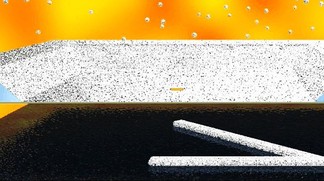A team of scientists at Ecole Polytechnique Federale De Lausanne (EPFL) have been studying if dynamic stencil lithography can be used to form nanostructures that form a transistor or silicon chip.

The team will also collaborate with the University of Basel’s Nanoscience Centre to apply this theory. Dynamic and static stencil lithography is much cheaper, quicker and more efficient than traditional nanolithography.
Under the static stencil method, a substrate, which could be plastic or silicon wafer is kept in an evaporator. On the evaporator, a stencil, which is also called an aperture measuring 100-200 nm is kept. During the process of evaporation, the stencil lets only the metal pass through it and allows it to reach the substrate. The metal is thus collected on the substrate in a specific manner. Collecting the metal with this amount of accuracy is very important for transistors and other electrical parts, which are composed of nanostructures to function properly. However, with static stencil lithography it is possible to create only one pattern of nanostructure.
Veronica Savu, EPFL
Veronica Savu from the Microsystems Laboratory of EPFL is investigating the use of dynamic stencil lithography to create nanostructures with different patterns. According to her, it is possible to attain different patterns with a single aperture by moving the stencil during the process of evaporation. As of now, Savu has been able to demonstrate this method on a substrate with a diameter of 100 mm. She has received a grant from the Swiss National Science Foundation for her current work and she also aims to develop functional transistors by using nanowires and graphene.